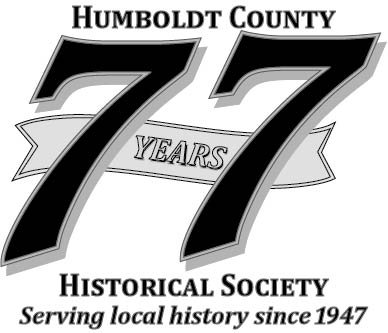Humboldt's Uncivil War
James R. Garrison
The author brings together the major aspects of the long Indian-white conflict of 1850s and 1860s Humboldt, showing how each element affected the outcome.
Hiking Through History: History's Mysteries
Barry Evans
Join the author on a hike to Grasshopper Peak, with a stop at Johnson Camp.
The Story Catchers of Southern Humboldt
Jerry Rohde
Pliny Earle Goddard and C. Hart Merriam: called by fleeting voices of the past.
You Didn't Hear it From Me: Steel Stay Stays Bullet
Louella Parsnips
The Lockhart case provided plenty of prattle for the chinwaggers.
The Tanoak Tree: An Environmental History of a Pacific Coast Hardwood by Frederica Bowcutt
Jerry Rohde
A Book Review
Anna Elizabeth Larson
Vivian Ziegler
Anna Elizabeth began her working life at age eleven in her homeland of Sweden. For her next job, at age fifteen, she came all the way to Arcata.
Adolph Barry Adams
St Clair Adams
A. B. Adams sailed from Australia to Eureka at age fourteen. He would become Justice of the Peace during Prohibition.
““American Progress” was painted in 1872 by Prussian-born, Brooklyn-based artist John Gast for a popular series of western travel guides published by George Crofutt. Crofutt included the image in all his books and also produced large versions of it for his subscribers, distributing it widely. The actual painting is surprisingly small: 12 ¾ x 16 ¾ inches. An effective visual representation of Manifest Destiny, the painting incorporates a giant luminous female—“whose diaphanous gown somehow remains attached to her body without the aid of Velcro or safety pins,” as one historian observes*—holding a book to symbolize education and a coil of telegraph wire to unite the country from sea to sea. Her appearance exhorts ordinary Americans to become part of something bigger than themselves: the agents of extending this bright progress into the dark wild reaches of the West. Fleeing before this glowing specter and movement of men by more and more capable means of transportation are the continent’s Native Americans and its wild buffalo, horses, bears and other creatures. James Garrison’s article, “Humboldt’s Uncivil War,” on page 8 of this issue, shows how this seemingly ordained westward movement unfolded in one particular corner of the West, the Humboldt frontier.”

